PREVIOUS
Freedom Fighters from Tamil Nadu Part – 16
Freedom Fighters from Tamil Nadu Part – 16
(இதன் தமிழ் வடிவத்திற்கு இங்கே சொடுக்கவும்)
84. Vairappan
Birth and Early Life
- Date of Birth: 22 May 1906
- Place of Birth: Vedaranyam, Tamil Nadu
- Parents: Kalitheethan and Vairammal
Involvement in the Freedom Movement
- Vairappan was deeply inspired by Mahatma Gandhi’s policies and ideologies.
- He maintained a close association with Sardar Vedaratnam Pillai.
Salt Satyagraha:
- He participated in the Agasthiyapalli Salt Satyagraha while Gandhiji was breaking the Salt Tax up north.
Recognition and Honors
- Tamra Pattayam (1972):
- Vairappan received the Tamra Pattayam award from former Prime Minister Indira Gandhi during the 25th Anniversary of Independence celebrations.
- Statue:
- A bronze statue was erected in 2010 at the Salt Satyagraha building in Vedaranyam to honor his contributions to the freedom struggle.
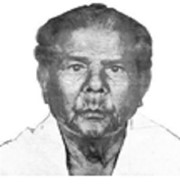
85. Lakshmi Krishnan
Birth and Early Life
- Place of Birth: Coimbatore, Tamil Nadu
- Education: She completed eighth standard in school.
- Move to Burma: She relocated with her father to Burma after completing her schooling.
Involvement in the Freedom Movement
- Indian National Army:
- She joined the Jhansi Regiment of the Indian National Army.
- She volunteered and trained for six months at Zeyawaddy under the leadership of Netaji Subhash Chandra Bose.
- She served as a Section Commander in the Rani Jhansi Regiment.
- She returned to her native village after Bose's death.
86. M. Bhakthavatsalam
Birth and Early Life
- Bhakthavatsalam was born on October 9, 1897, in Nazarathpet, Chingleput District, Madras Presidency.
- He was a member of the Indian National Congress.
Education:
- He received his early education at Christian Mission School and P.S. High School in Chennai.
- He graduated with a degree in Economics from Presidency College, Madras, in 1916.
- Afterward, he attended Madras Law College and practiced as an advocate under Alladi Krishnasami Iyer.
Political and Independence Movement Career:
- Early Political Involvement: He joined the Home Rule Movement led by Dr. Annie Besant
- while in college; influenced by Mahatma Gandhi.
Freedom Struggle:
- Bhakthavatsalam participated in the agitation against the Rowlatt Bill.
- He joined the freedom struggle in 1921.
- He was active in the Civil Disobedience Movement and was imprisoned in 1932.
- He managed the Tamil daily newspaper “India” until 1933.
- He imprisoned for 9 months during the Individual Satyagraha Movement (1940-41).
- He imprisoned for 2 years during the Quit India Movement (1942).
Political Roles:
- He served as Deputy Mayor of Madras Corporation in 1937 and was appointed Parliamentary Secretary in Rajaji’s Ministry the same year.
- In 1946, he joined the Cabinet and held various ministerial roles until 1963.
- He was the Minister of Public Works and Information from March 24, 1947, to April 6, 1949, and served as Minister of Agriculture from April 13, 1954, to March 15, 1962.
- He also held the position of Minister of Home Affairs from April 13, 1957, to March 15, 1962, and was Minister of Finance and Education from March 3, 1962, to October 2, 1963.
- He became Chief Minister of Madras State on October 2, 1963 and served until March 5, 1967.
- During his tenure, he initiated the establishment of Madurai University and planned and executed the Kundah and Periyar hydroelectric projects.
- He also created the first state-level highways department.
- Additionally, he enhanced the administration of temples while promoting temple architecture, music, and sculpture.
Key Contributions:
- He studied at Coimbatore Agricultural College, which developed into a premier institution.
- In terms of temple administration, he renovated temples and undertook large-scale renovation projects with the assistance of UNESCO.
Anti-Hindi Agitations:
- He supported the introduction of Hindi as a compulsory language.
- He implemented a three-language formula: English, Hindi, and Tamil.
Publications:
- Books Authored:
- The Absurdity of Anti-Hindi Policy: M. Bhaktavatsalam Speaks on Language Issue (1978, co-authored with K. Perumal Udayar).
- West Asia: Problems and Prospects (1985).
Family Connections:
- Daughter: Sarojini Varadappan, social activist.
- Granddaughter: Jayanthi Natarajan, politician and former Union minister.
- Death
- He passed away on February 13, 1987, at the age of 89, and is interred at Periyavar Bhakthavatsalam Ninaividam.
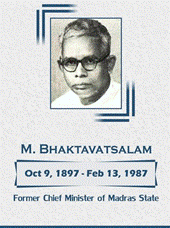
87. S. Manjubhashini
Early Life:
- Manjubhashini born on September 24, 1906, she came from a conservative and affluent family.
- She studied up to Standard VIII at Presidency Girls School in Egmore.
- She married at the age of 12 to Subramaniam, who later became a lawyer and a judge of the Madras High Court.
- With her husband's support, she completed her S.S.L.C.
Freedom Struggle:
- Inspired by Gandhiji’s call for freedom, she became actively involved in the Quit India Movement in 1942 and courted imprisonment.
- She participated in the Salt Satyagraha, taking part in the burning of foreign goods at Thambu Chetty Street and the Vedaranyam Salt March organized by Rajaji.
- She spent 1½ years in Vellore jail alongside Ammu Swaminathan and organized a camp in Madras to help rehabilitate Burmese refugees in 1941-42.
Social Welfare and Contributions:
- She was an active member of the Congress in T. Nagar, where she arranged meetings and conferences, training 10,000 Sevadal (women volunteers).
- Additionally, she organized Gandhiji’s prayer meeting at the Hindi Prachar Sabha in Madras.
Bala Mandir:
- Encouraged by K. Kamaraj, she founded Bala Mandir in 1949, starting with two children in two cottages on Congress grounds.
- Kamaraj served as the President of the first working committee, while Manjubhashini acted as Honorary General Secretary until her death.
- Her efforts inspired several social workers to contribute their time to Bala Mandir.
Legacy:
- She passed away on September 23, 1996.
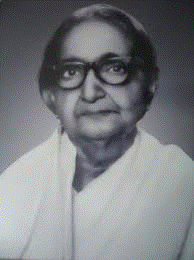
88. Woothampatti Punnaivana Ayya Soundarapandian Nadar
Early Life and Background:
- Born on September 15, 1893, in Pattiveeranpatti, Dindigul, Tamil Nadu, he hailed from a prominent coffee planter family.
- His family had owned estates near Kodaikanal.
- He was known as the uncrowned king of the Nadar community.
Political Career:
- He served on the Madras Legislative Council from 1920 to 1937 as the first Nadar member, recommended by P.T. Rajan.
- He represented the Nadar community in the Justice Party and the council.
- Additionally, he was the President of the Ramnad District Board from 1928 to 1930 and the President of the Madurai District Board from 1943 to 1947.
Social Activism:
- He was associated with the Self-Respect Movement founded by Periyar E. V. Ramasamy.
- In 1929, he was elected president of the first Self-Respect Conference.
- Additionally, he worked for the upliftment of Dalits, successfully abolishing the Kamudi punitive tax.
Social Reform:
- He allegedly provided financial support for the Anti-Hindi agitation from 1937 to 1940.
Later Life and Legacy:
- Pondy Bazaar in Chennai is believed to be named after Soundarapandian Nadar.
- A statue of him, sculpted by Nagappa Jagannathan, was erected at the entrance of Pondy Bazaar and unveiled by the Government of Kalaignar Karunanidhi.
- The bazaar’s name was later updated to "Soundarapandian Angadi."
Community Contributions:
- He was active in setting up schools and institutions for the Nadar community in Kayamozhi.
Death:
- He passed away on February 22, 1953.
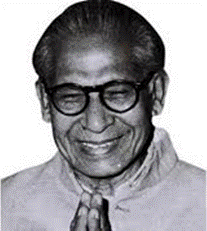
89. Sardar Vedaratnam Pillai
Early Life and Background:
- Vedaratnam Pillai was born on February 25, 1897, in Vedaranyam, Tamil Nadu.
- He was the son of salt merchants Appakutty Pillai and Thangam Aachi.
- Pillai belonged to the Saiva Pillai community, known for composing Tamil poetry and managing Shiva temples.
- Growing up in a pious and patriotic family, he was deeply inspired by leaders like Mahatma Gandhi and Sardar Patel.
Freedom Struggle
- As a teenager, Vedaratnam Pillai actively joined India’s Freedom Struggle.
- He advocated for Khadi and participated in the Swadeshi movement, which promoted local goods.
- In 1930, he and Rajaji led a local march during Gandhi's Salt Satyagraha.
- His defiance against British rule led to severe repercussions, including fines, imprisonment, and the confiscation of his property.
Recognition and Activism
- In 1931, Vedaratnam Pillai was honored with the title "Sardar" for his contributions to the freedom movement.
- After the arrest of key leaders in 1942, he worked tirelessly to sustain Gandhiji's teachings and initiatives.
- Following Kasturba Gandhi's death in 1944, he sought funds to support Women's and Children's Welfare Centers.
- In 1946, he founded the Kasturba Gandhi Kanya Gurukulam, which provided free education and lodging for poor girls.
Community Contribution
- Vedaratnam Pillai was recognized for his work with marginalized communities and received a gold medal from the Tamil Nadu Government.
- He served three terms as a Member of the Legislative Assembly, during which he donated his entire salary to the Shri Ramakrishna Mission.
- A staunch nationalist, he advocated for Hindi as a unifying language while also cherishing the Tamil language.
Later Life and Legacy
- Vedaratnam Pillai passed away on August 24, 1961, while still active in the assembly.
- In 1998, a commemorative postage stamp was issued in his honor to mark his 101st birthday.
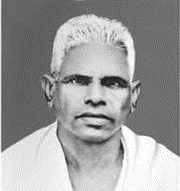
-------------------------------------


